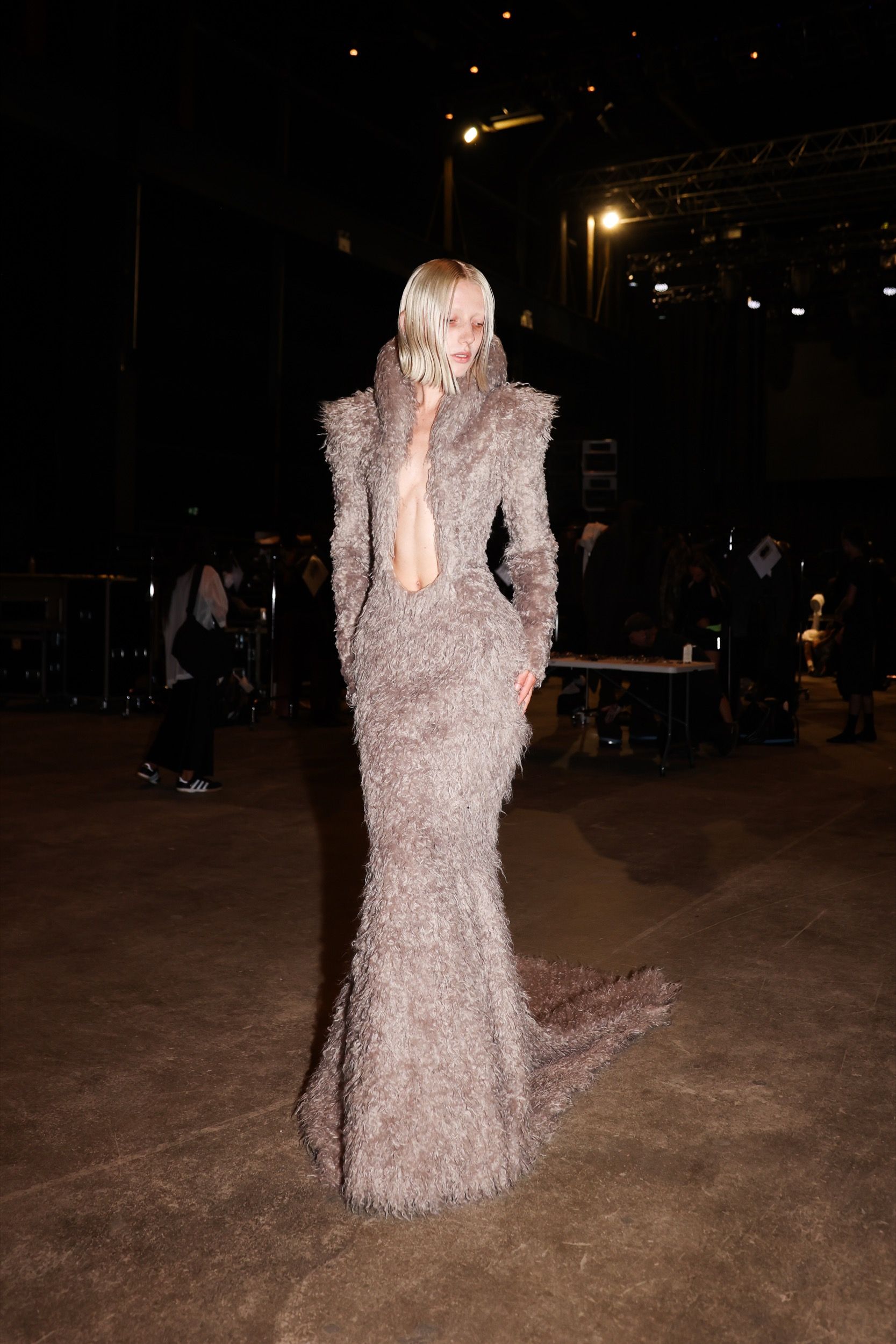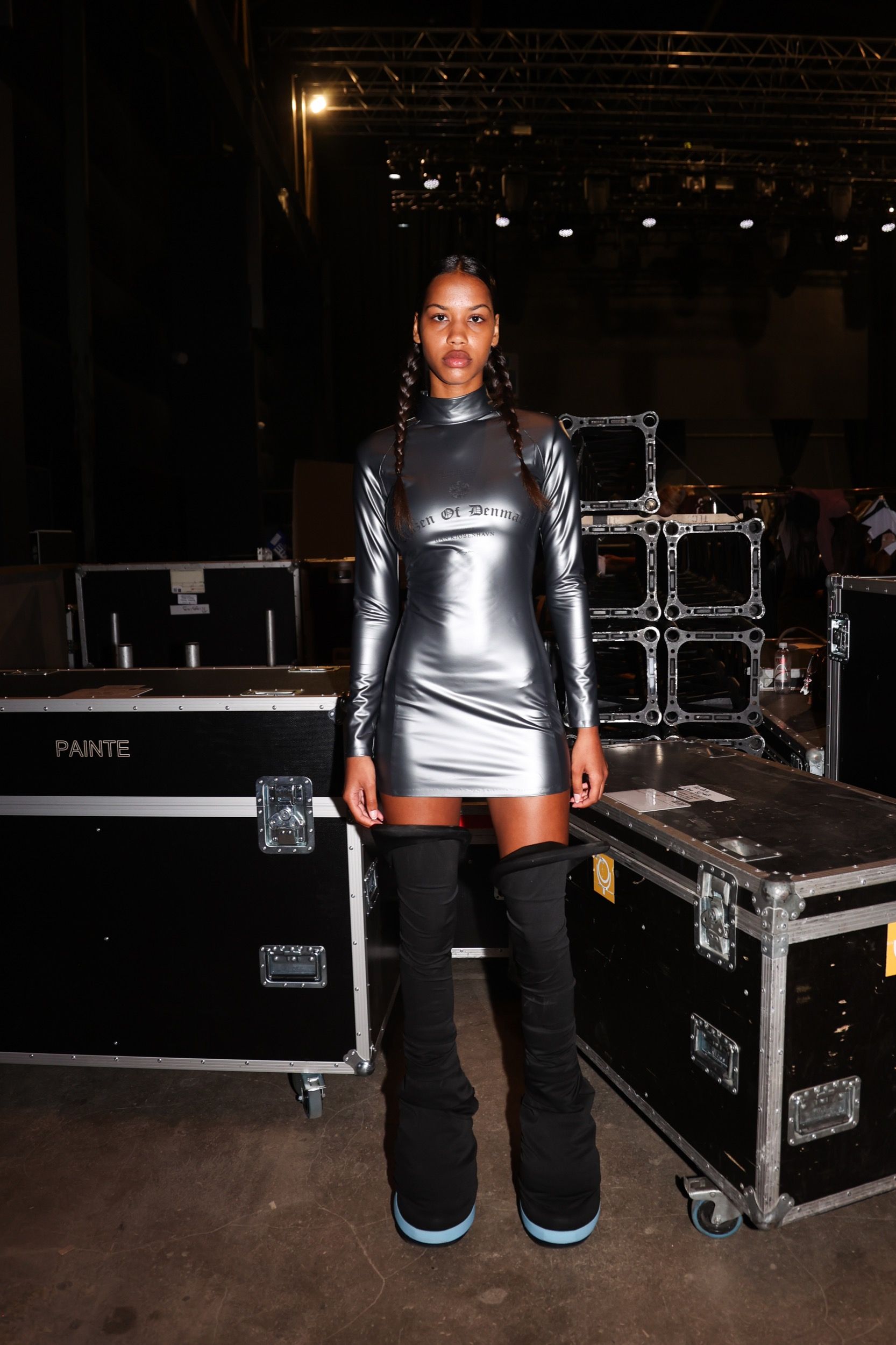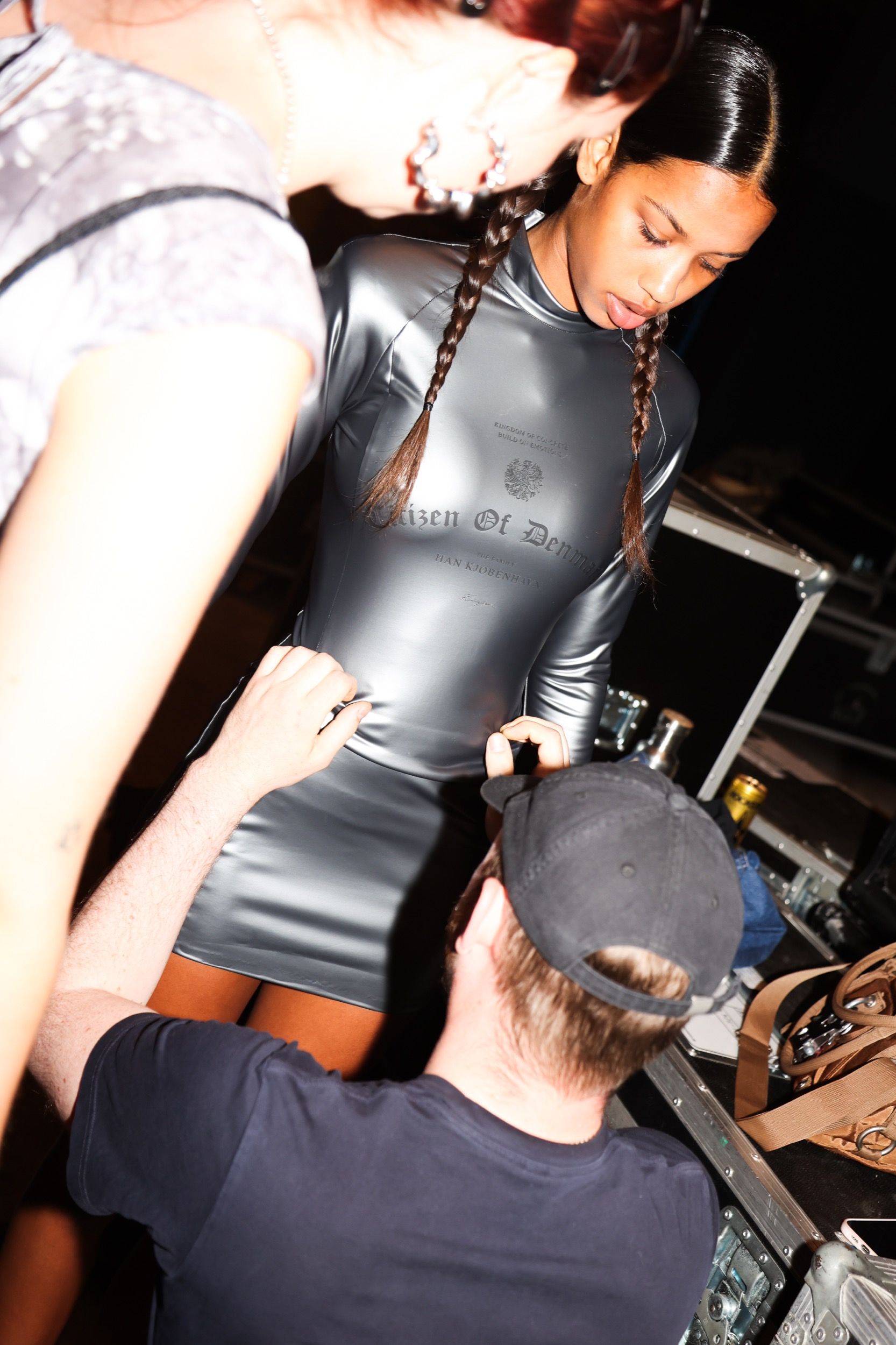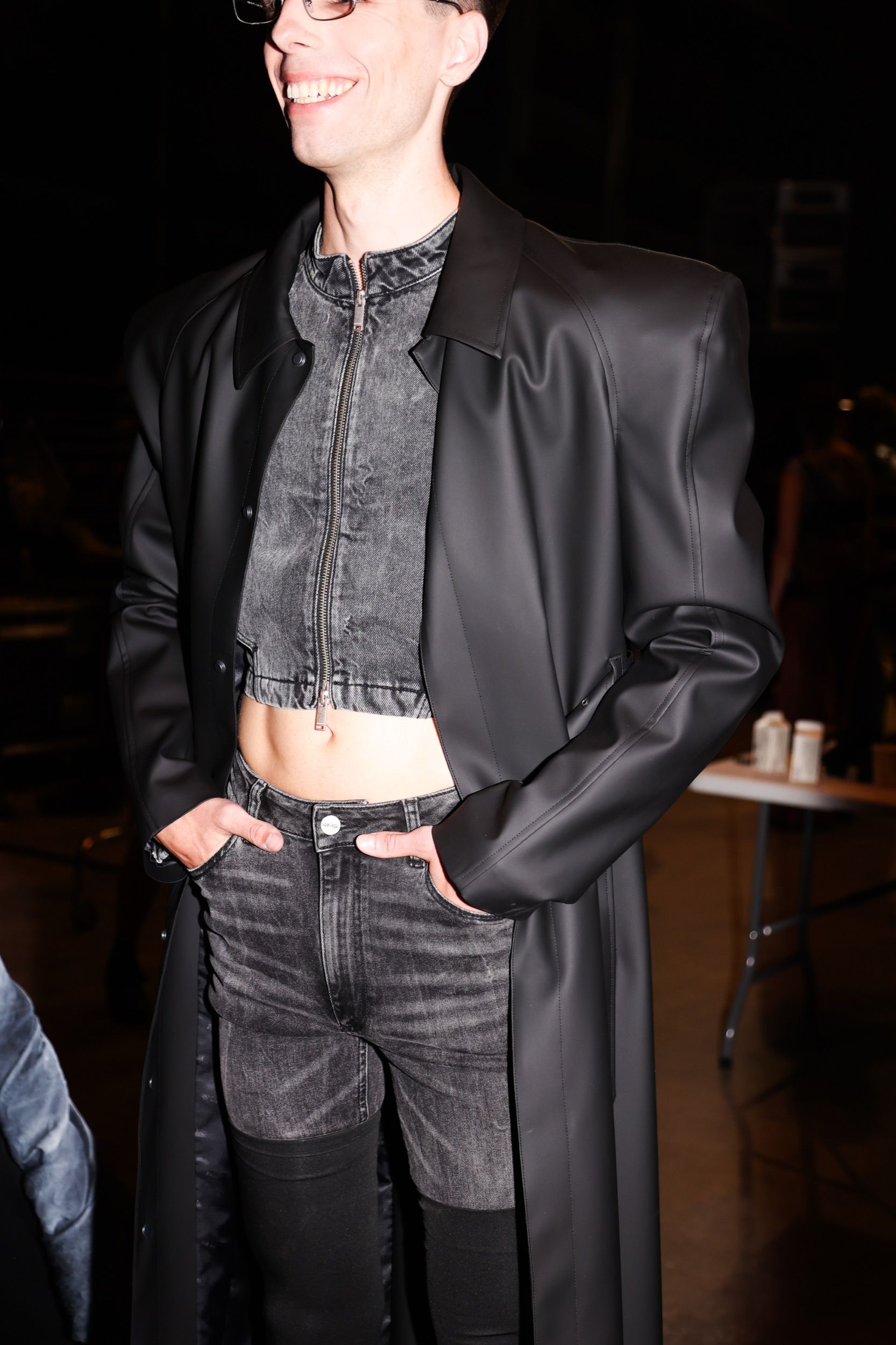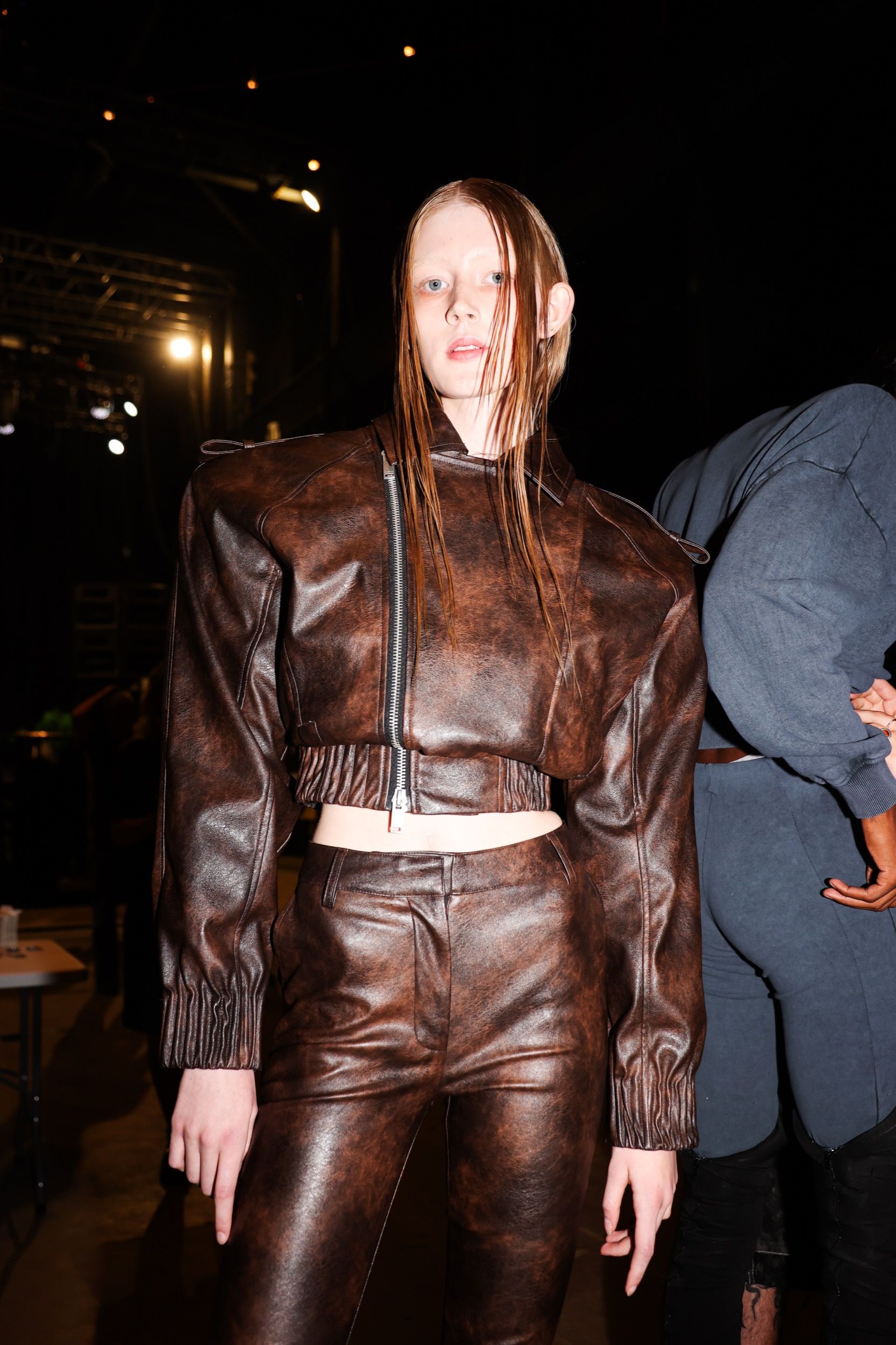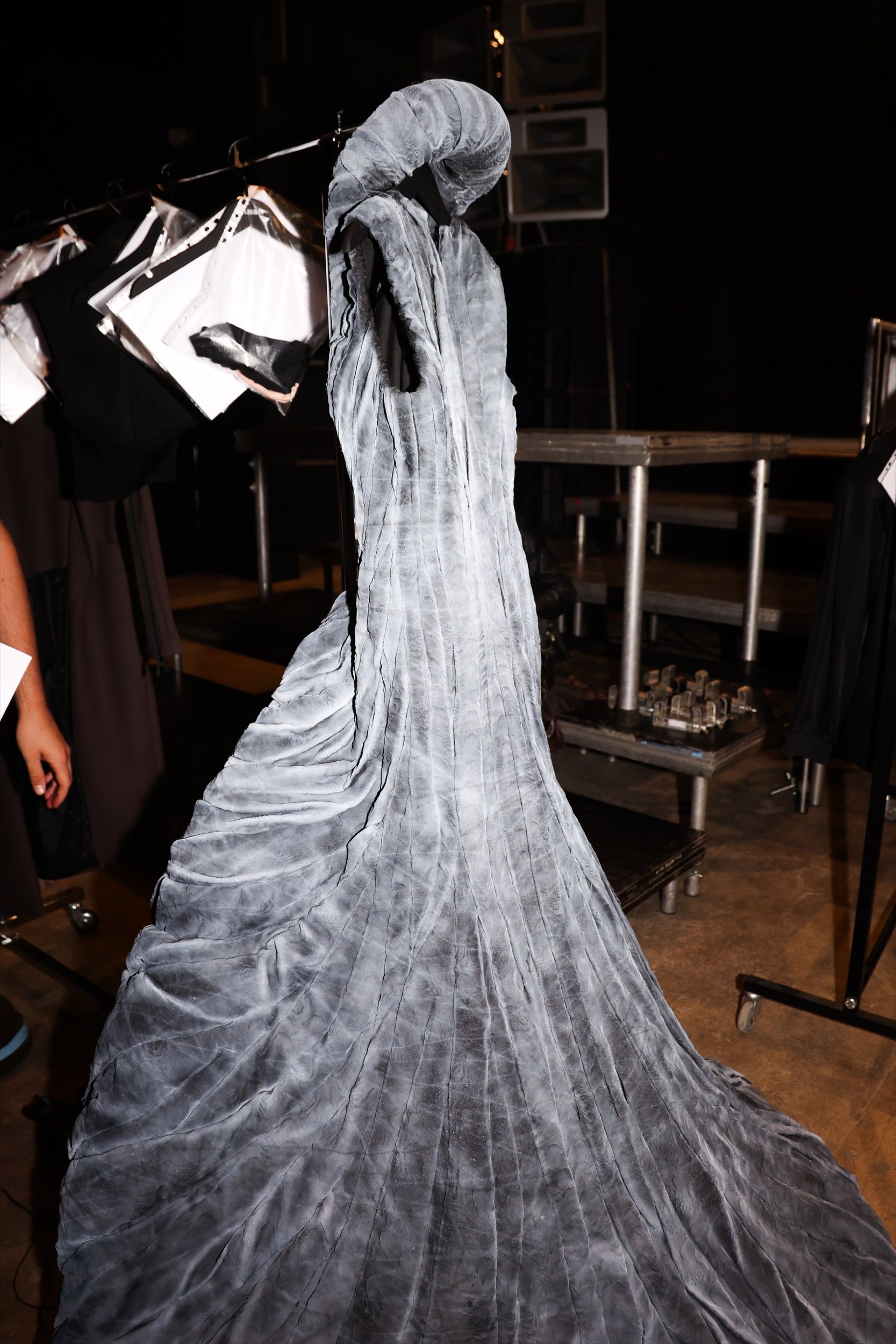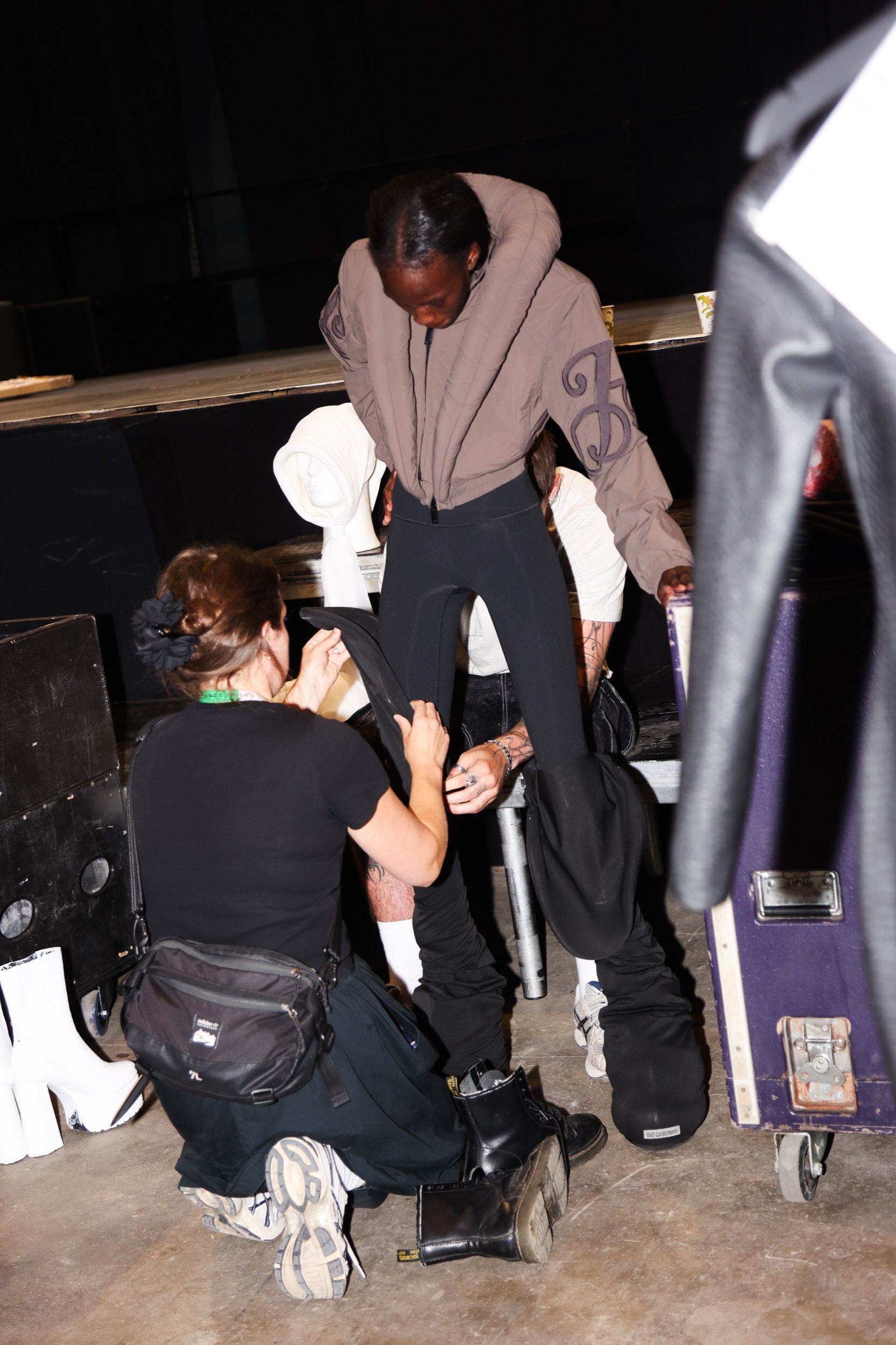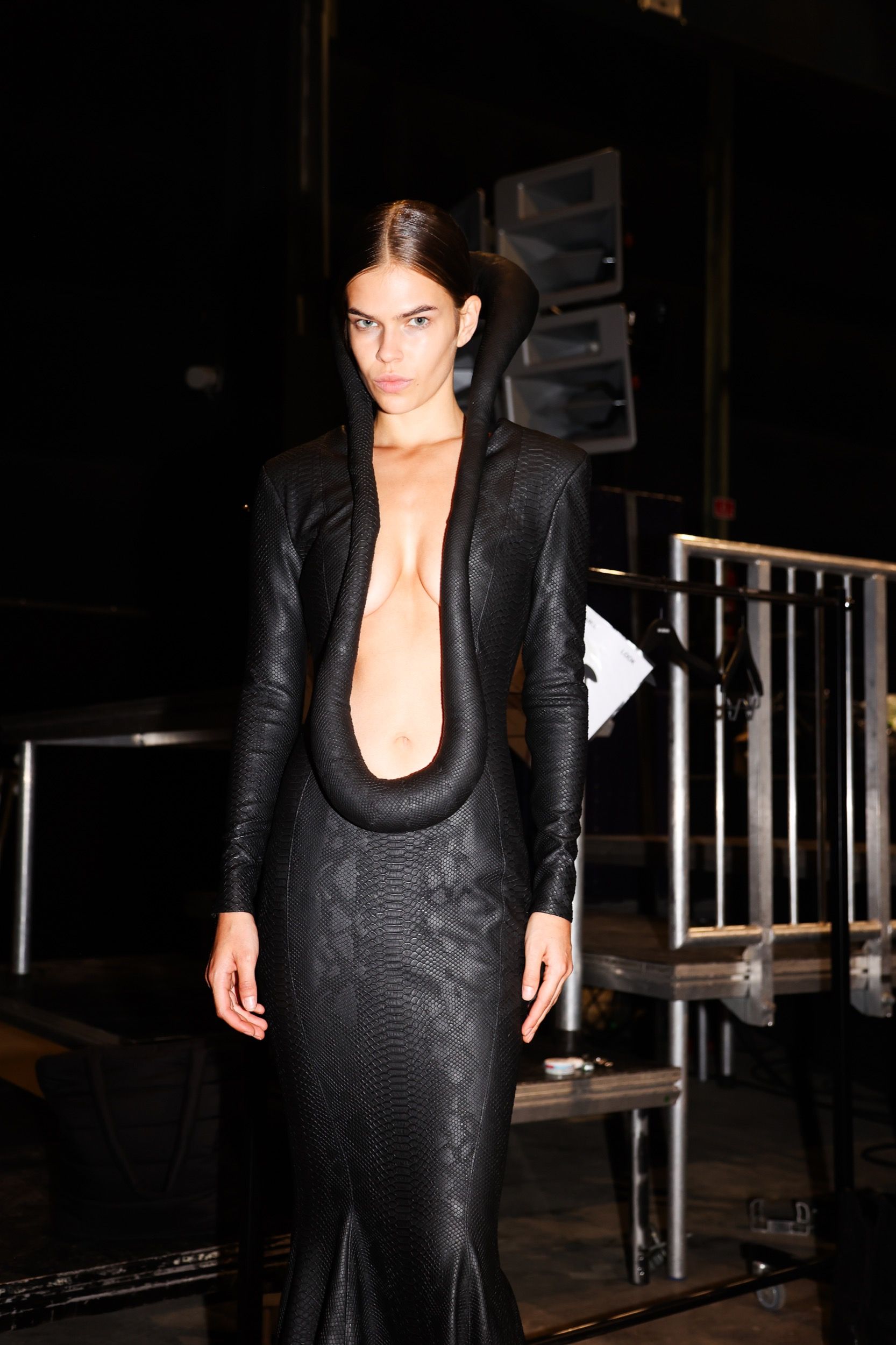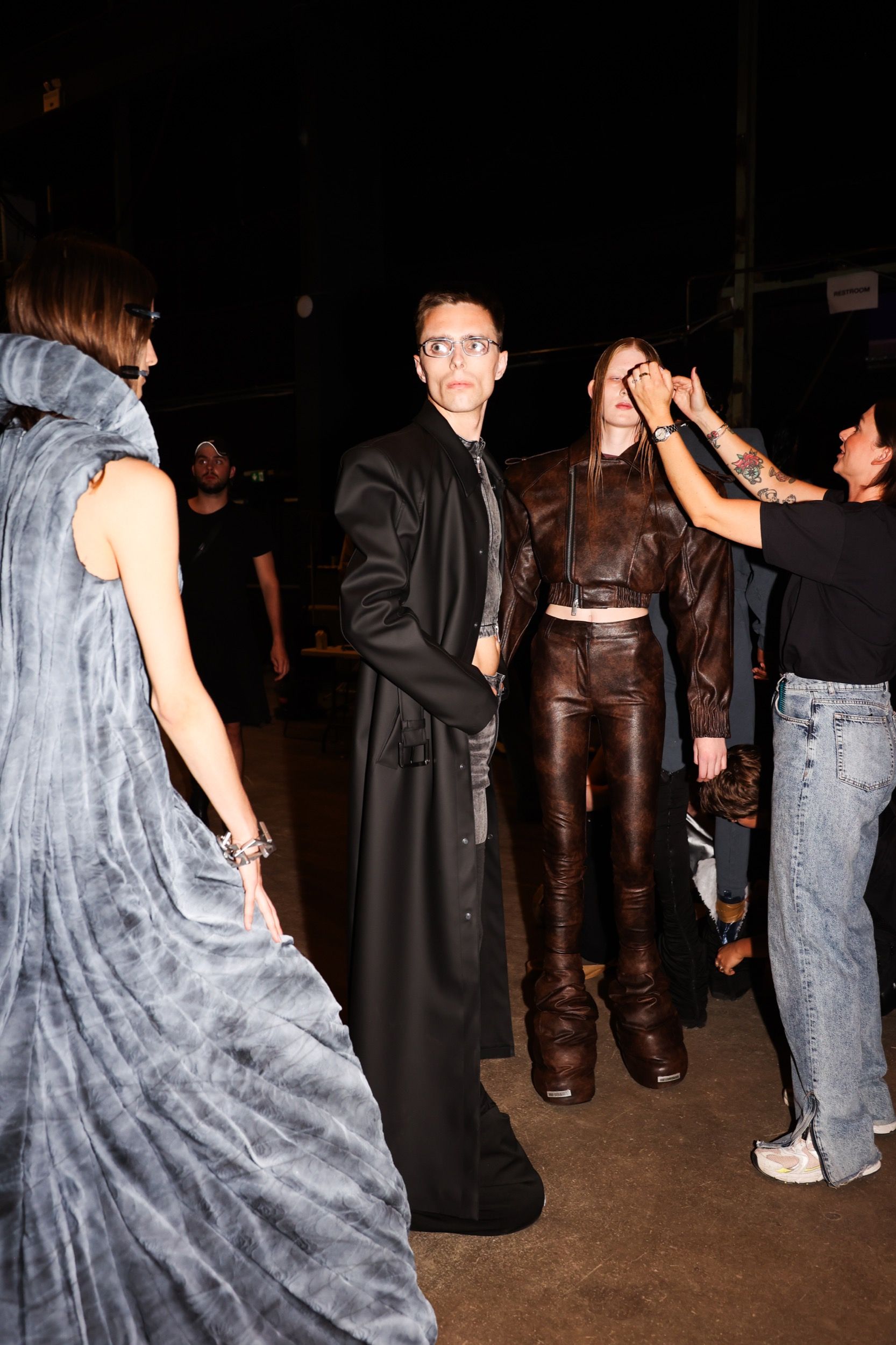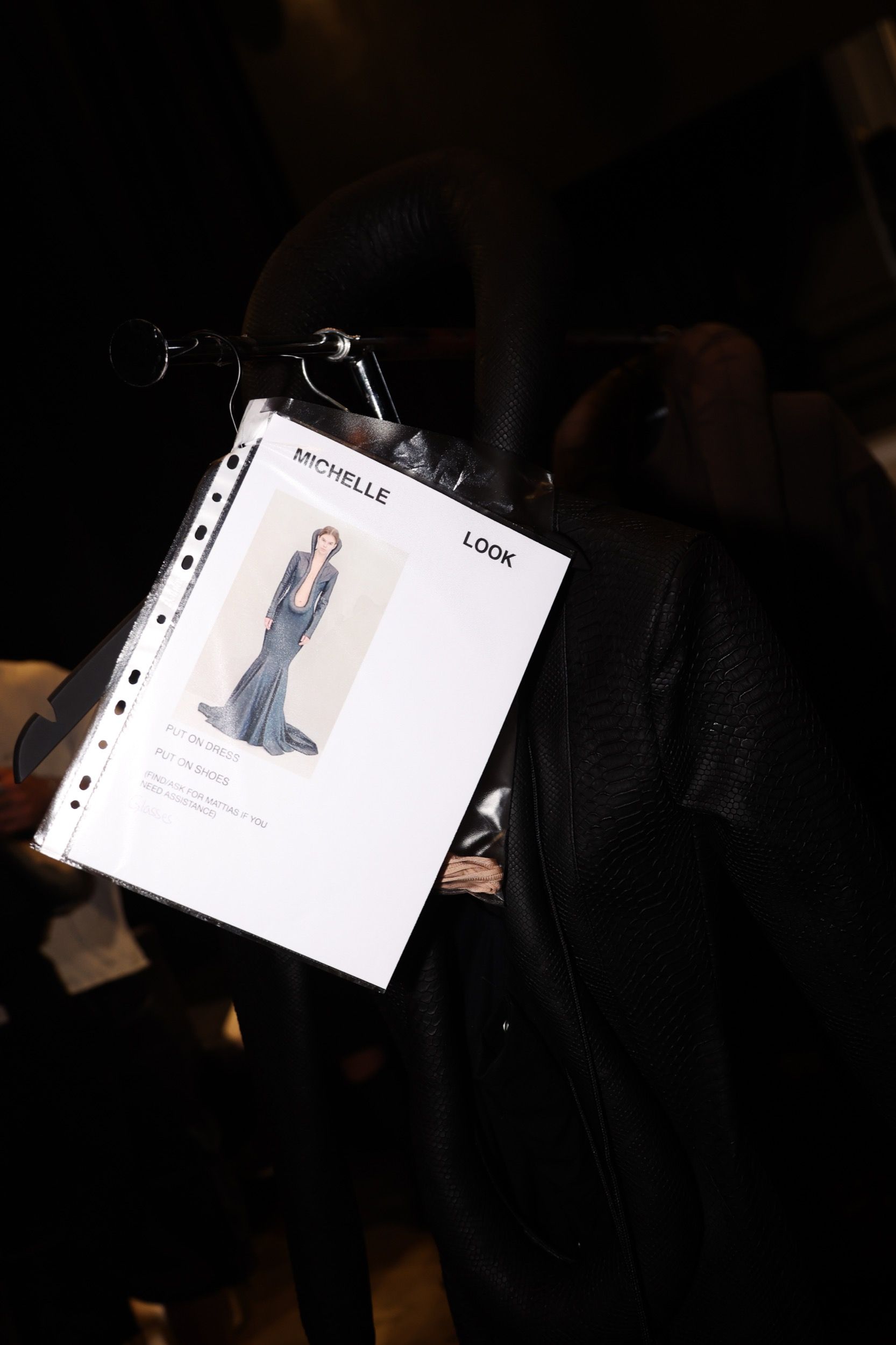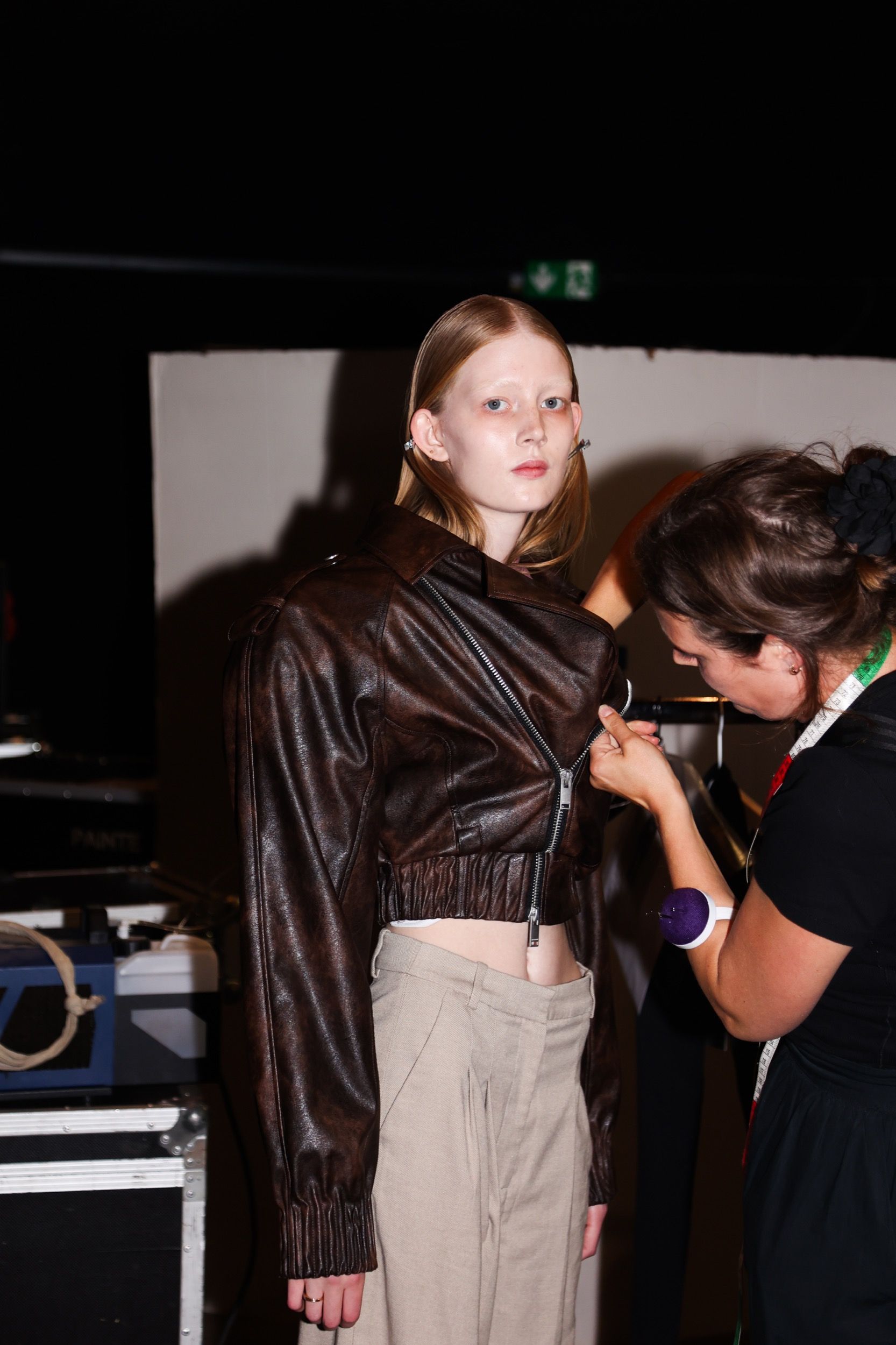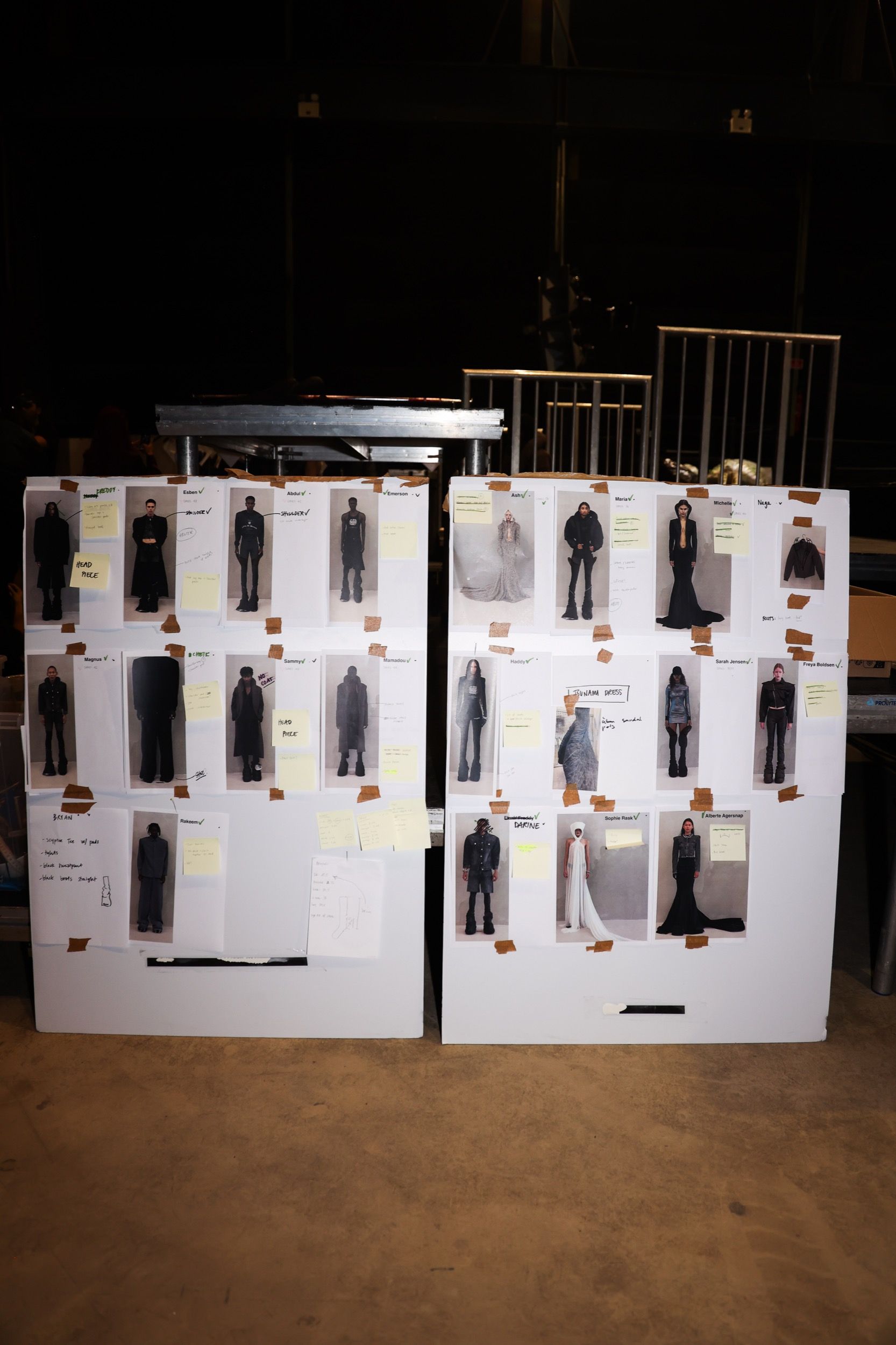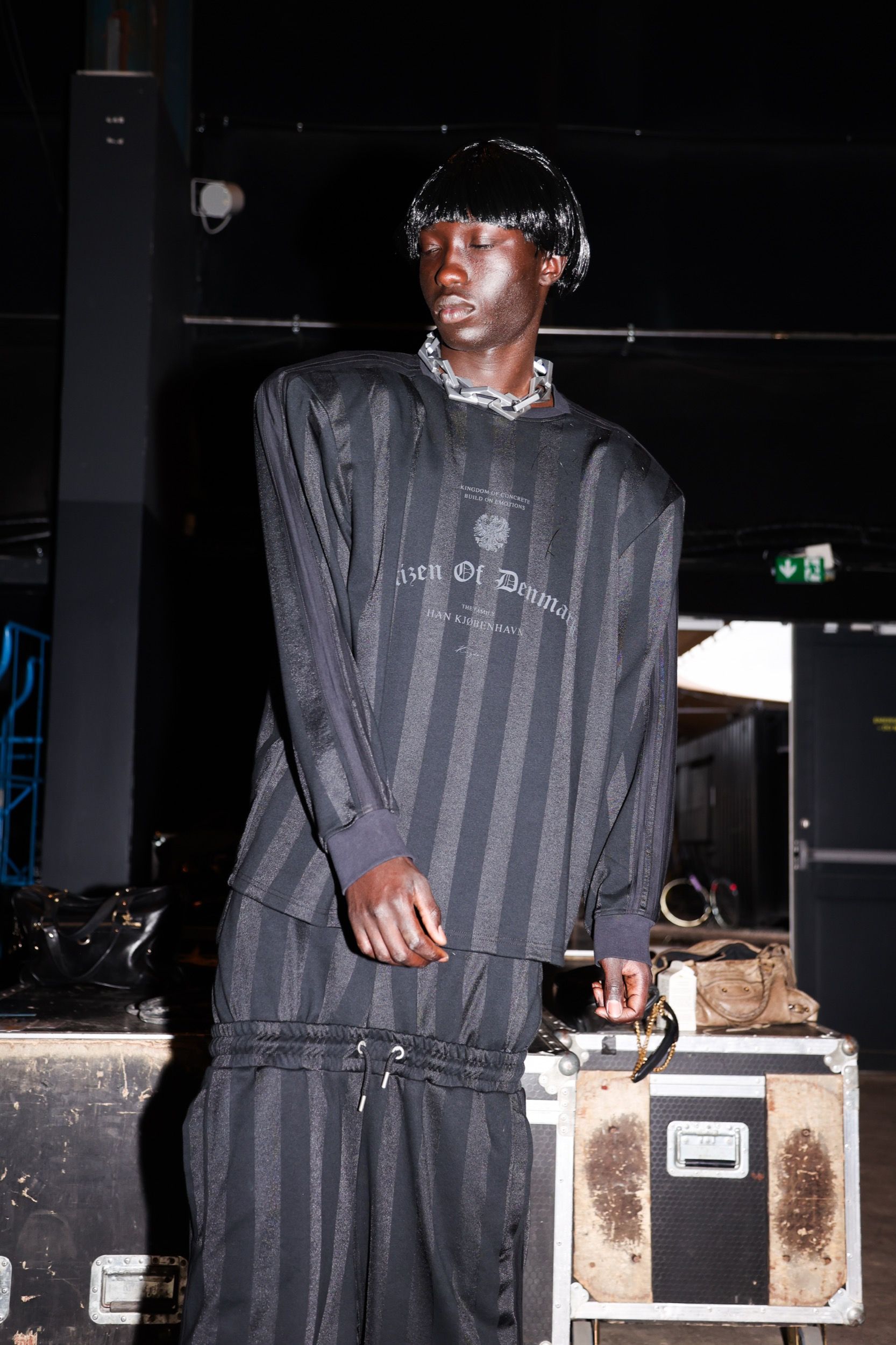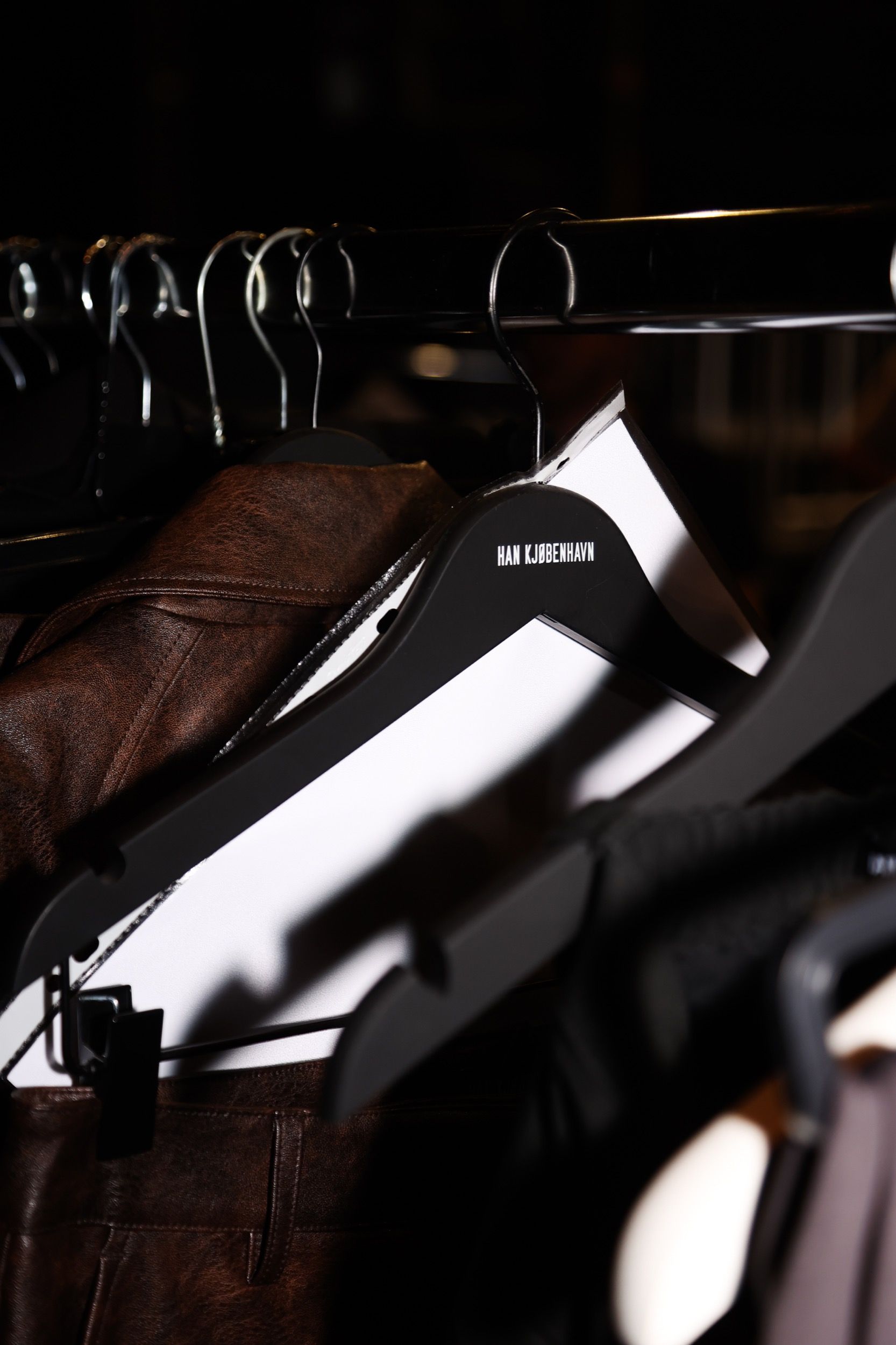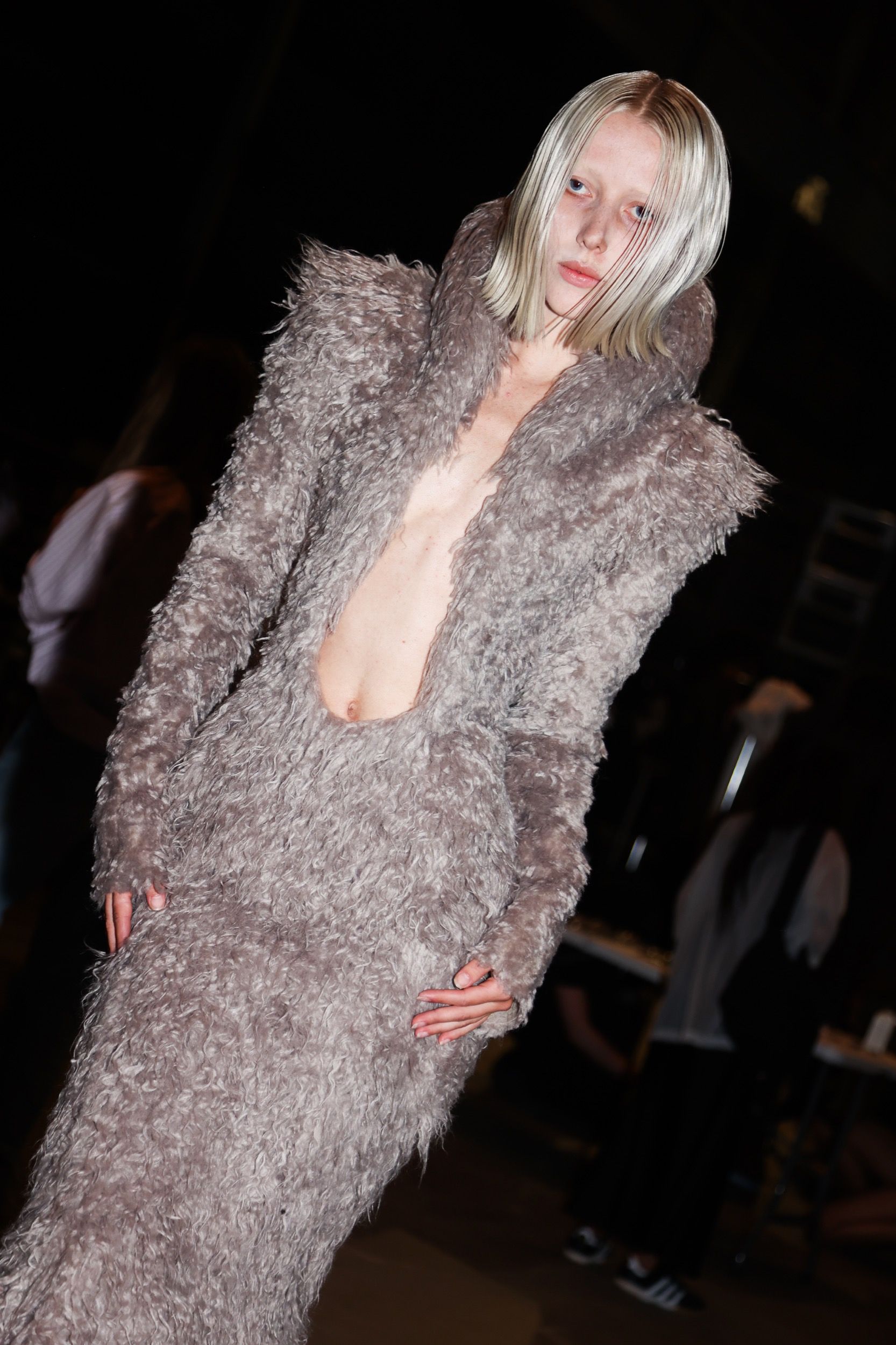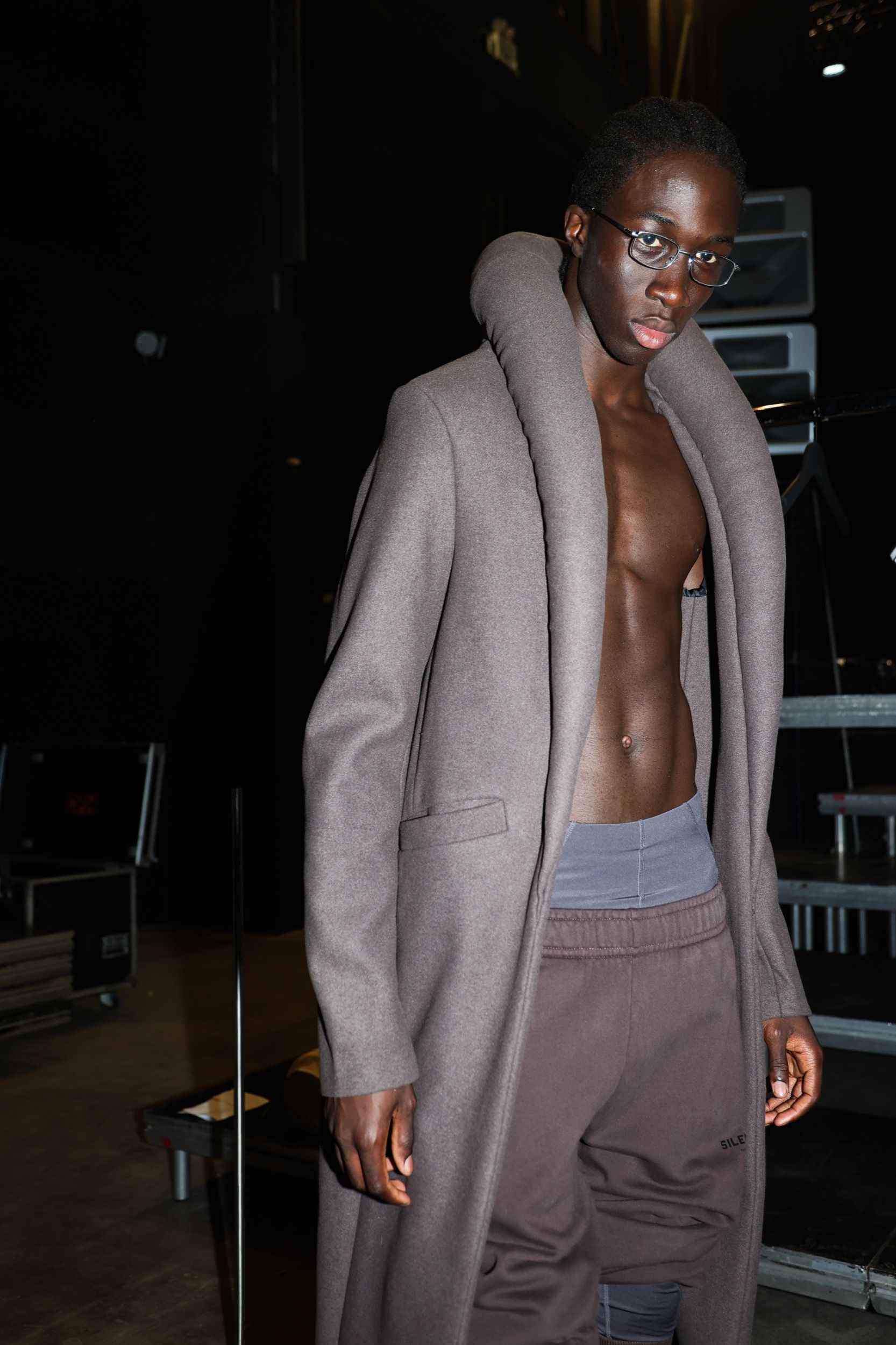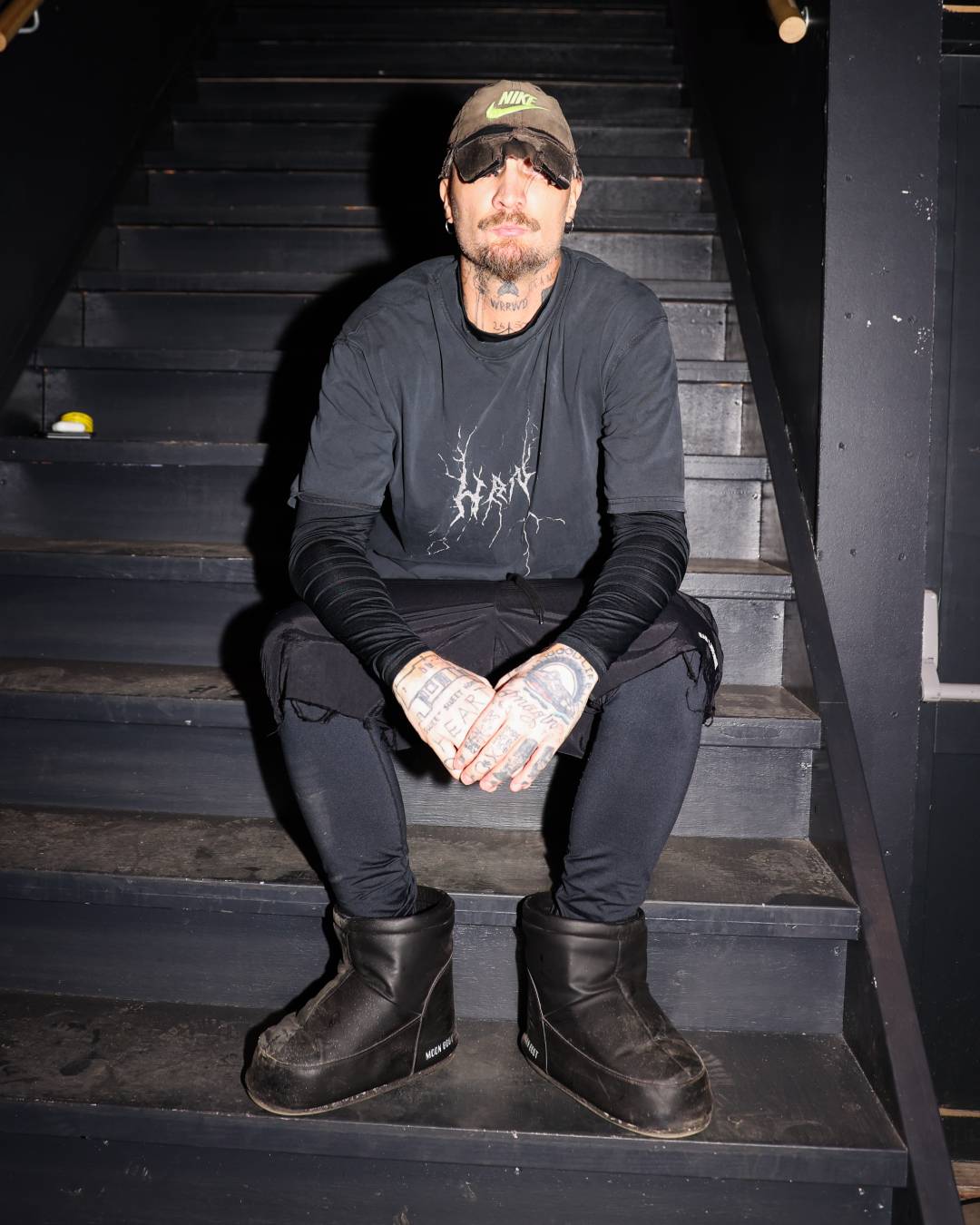
Han Kjøbenhavn's concrete royals Jannik Wikkelsø Davidsen talks about the brand SS25
The Copenhagen Fashion Week is a particularly functional idyll. Everything, from the bike-accessible show locations to the inclusive and sustainable clothing, seems to reflect an ideal world—not artificial, but certainly the result of a Platonic aspiration to be the best version of oneself. The clothes, in all of this, are no exception. The Danish fashion capital has, after all, established itself among the top fashion cities by bringing a concrete desire to create a different narrative within the industry. So when a brand steps outside this idyll—not ideologically but aesthetically, to be clear—when a dark hue stains the neutral-toned feed of CPHFW-geolocated social content, the contrast is sharp and loud. For Han Kjøbenhavn's SS25, dramatic clouds covered the sky above the industrial area, the first rain on the last day of CPHFW, almost setting the right atmosphere for a show made of dark tones, structured garments, and oversized footwear. Deep necklines, chunky boots, and exaggerated shoulders dominated the runway, with some hints of femininity and sweetness, like a sculptural dark gray faux fur dress and a white veil turned into a dress, closing the show with a message of hope and purity. To tell an untold side of Scandinavian fashion, the intersection between Danish fairy tales and Demna Gvasalia, we met Han Kjøbenhavn's artistic director, Jannik Wikkelsø Davidsen, for a chat a few days before the presentation of his latest collection titled Royals.
You often say that your goal is “to create beautiful garments based on emotion”; the concept of emotion itself seems to be a recurring theme in all your interviews.
It is. What I mean when I talk about emotion is that I try not to be deliberate when creating my garments. With the advent of social media, it seems like each of us absorbs, often subliminally, an inhuman amount of content that, however, all seems to look the same, as if it were created following a pre-written recipe. I don’t believe I really live in today's world; I've never had Facebook, and if it weren't for work, I wouldn't have opened an Instagram profile either. So I just try to look within myself, creating. Inspirations are memories, feelings, fragments of experiences. And this collection is really super personal. But an emotion is difficult to explain because sometimes an emotion can have a shape, you know?
The study of geometric shapes is evident in every collection, almost a game of extreme proportions in addition to the exploration of unusual shapes. Does this type of research also hide an emotional value?
Of course, often for me, an emotion has a specific shape, as if it guides me in creating a garment. The end of a love story, a joyful moment, a difficult time in your life, stress, anxiety, everything has different shapes and textures for me. An amorphous mass that I try to shape, maybe to put things in order.
In recent years, your work has shifted and established itself toward darker tones, somewhat in contrast to the colors and imagery we usually associate with Copenhagen, openly contrasting the dominant aesthetic. Almost as if you were telling a side of the city we usually ignore in the sanitized images that scroll through our Instagram feeds?
The perception is correct. I think that Danish and Scandinavian fashion, or more broadly, architectural and design styles, are perceived and represented in a very specific way. I have a different approach because my inspiration is, once again, personal, tied to my upbringing and the world I live in—a more everyday Denmark. In winter, the sun sets early, and we have about a month and a half of summer if we're lucky. And then there's my background. I grew up in the suburbs, but not like the American Hamptons, more like the banlieues of Paris: lots of steel, metal, concrete, and many industries. So, I actually feel that I’m conveying or telling a more truthful story about Denmark than the one most people tell.
The title of your show, The Royals of Concrete, refers to this, doesn't it? Is it the story of your childhood in the Danish suburbs?
It's a story of kids growing up among the concrete of a suburb, but in Denmark, which is a monarchy. The starting point of this story is raw and gritty from a narrative perspective, and that's where I bring in elements of beauty. And of course, casting is essential in this as well: you can't make any piece work without the right casting—it just doesn't work. So the casting will be as "rough" as the pieces. It's a story balanced between contrasts, and that's how it is because that's how I am.










































